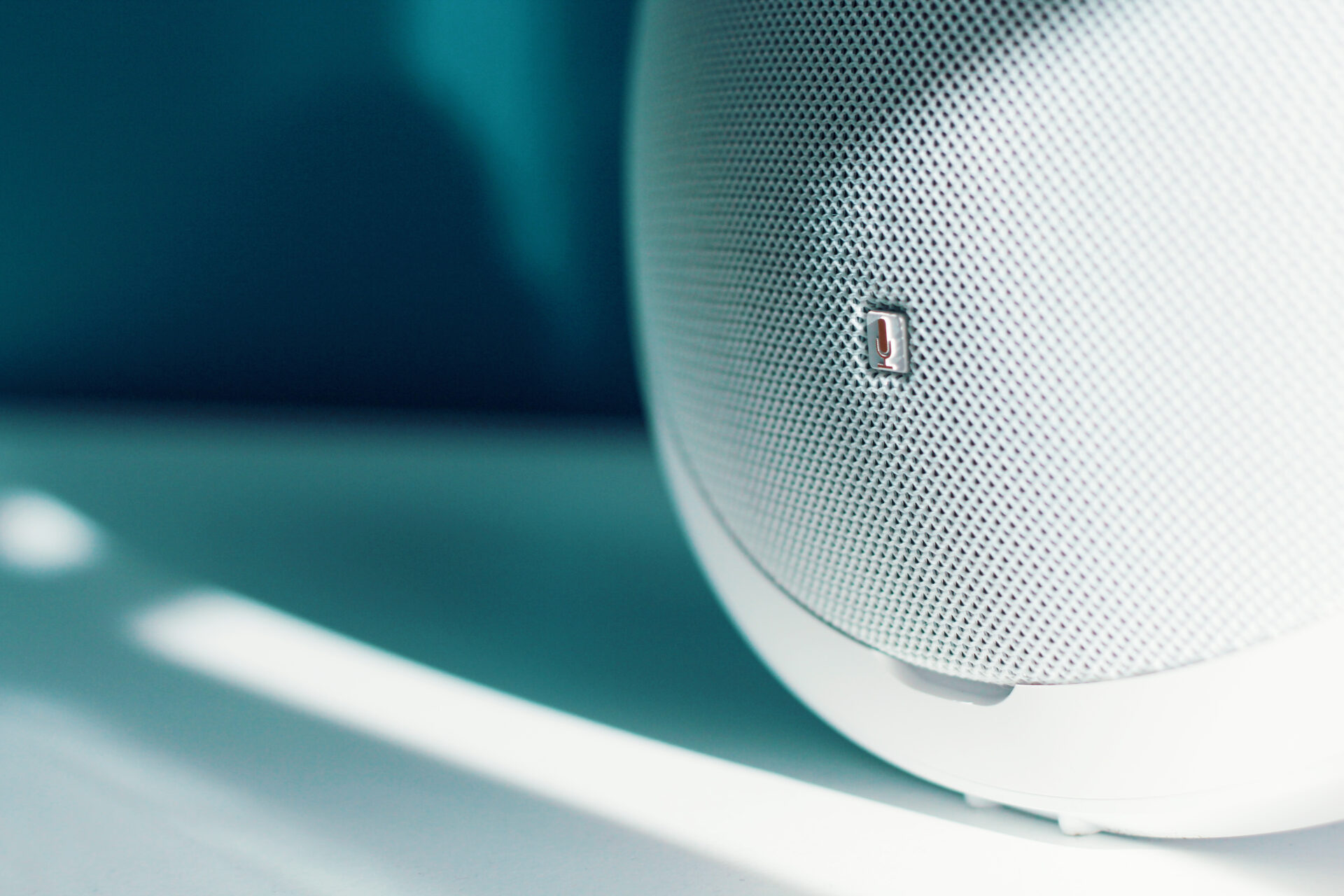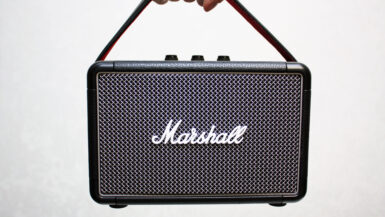In today’s world, technology has made it possible to create more accessible and convenient living environments for all, especially for the elderly who may require additional assistance. One such innovation is the integration of voice-controlled smart home devices that can truly transform the daily lives of our senior citizens. In this article, we delve into the core aspects of setting up a voice-controlled smart home tailored to the unique needs of the elderly. From understanding the benefits of voice-enabled devices to selecting the right gadgets and ensuring seamless connectivity, our comprehensive guide aims to equip you with the knowledge to create a safe, comfortable, and technologically advanced living space for your aging loved ones. Let’s embark on this journey towards a more independent and accessible future for our senior community.
Top Voice-Enabled Smart Home Devices for Senior Citizens
As the demand for voice-controlled smart home devices grows, numerous innovative gadgets have been developed to cater specifically to the needs of senior citizens. These devices not only provide convenience but also enhance safety and accessibility. This subsection highlights the top voice-enabled smart home devices that can significantly improve the living experience of the elderly.
1. Amazon Echo Family: Versatile Voice Assistants
Amazon’s Echo family of smart speakers, featuring Alexa, is a popular choice for seniors due to its versatility and ease of use. With simple voice commands, seniors can control various smart home devices, listen to music, set reminders, and even make phone calls. The Echo Show, which includes a display screen, can also facilitate video calls and provide visual aids for recipes, news updates, and more.
2. Google Nest Hub: Combining Voice Control and Visual Assistance
The Google Nest Hub is another excellent option for seniors, offering both voice control and visual assistance through its display screen. With Google Assistant, users can easily manage smart home devices, get weather updates, access their calendars, and more. Additionally, the Nest Hub can be integrated with security cameras, doorbells, and other safety devices, providing seniors with an added layer of security.
3. Apple HomePod Mini: Siri-Powered Smart Home Hub
For seniors who are committed to the Apple ecosystem, the HomePod Mini is a compact and stylish choice. Powered by Siri, the HomePod Mini can control compatible smart home devices, play music, provide news and weather updates, and more. The device also supports Intercom, allowing family members to communicate within the house or even remotely using their Apple devices.
4. SimpliSafe Home Security System: Voice-Controlled Safety
For seniors looking to enhance their home’s security, the SimpliSafe Home Security System offers a comprehensive solution compatible with both Alexa and Google Assistant. With voice commands, seniors can arm or disarm the system, check its status, and receive notifications about any security breaches. The system also includes a 24/7 monitoring service, giving seniors and their families peace of mind.
5. Philips Hue Smart Lighting: Customizable Voice-Controlled Illumination
Philips Hue smart lighting can transform a senior’s living space by offering customizable, voice-controlled lighting options. Compatible with Alexa, Google Assistant, and Siri, Philips Hue allows seniors to turn lights on and off, dim them, or change colors simply by speaking. These lights can also be programmed to follow a schedule, helping seniors maintain a consistent daily routine.
By selecting and integrating these top voice-enabled smart home devices, you can create a comfortable, safe, and accessible living environment for your elderly loved ones, allowing them to enjoy greater independence and an enhanced quality of life.
Step-by-Step Guide to Setting up a Voice-Controlled Elderly-Friendly Home
Creating a voice-controlled smart home for the elderly involves careful planning and consideration of the unique needs and preferences of your aging loved ones. This step-by-step guide will walk you through the process of setting up a voice-controlled elderly-friendly home, from selecting the right devices to ensuring seamless integration and maximizing ease of use. Let’s get started on building a technologically advanced and accessible living space for your senior family members.
Step 1: Assess the Needs and Preferences of Your Elderly Loved Ones
Before diving into the world of smart home devices, it is crucial to understand the specific needs and preferences of the elderly individuals who will be using them. Have a conversation with your loved ones to gauge their comfort level with technology and identify areas where voice-controlled devices could make their lives easier. This will help you make informed decisions when selecting devices and customizing their settings.
Step 2: Choose a Voice Assistant and Compatible Devices
Selecting a voice assistant, such as Amazon Alexa, Google Assistant, or Apple Siri, is a critical step in setting up a voice-controlled smart home. Consider the existing devices your elderly loved ones already use, as compatibility with their smartphones or tablets can make the overall experience more seamless. Once you’ve chosen a voice assistant, research and select compatible smart home devices that cater to the specific needs you identified in Step 1.
Step 3: Install and Configure Devices for Optimal Accessibility
After selecting the appropriate voice assistant and devices, it’s time to install and configure them for maximum accessibility. Place voice-controlled speakers in strategic locations throughout the home, ensuring clear audibility and ease of access. Configure devices to respond to simple, intuitive voice commands, and personalize settings to accommodate the preferences and daily routines of your elderly loved ones.
Step 4: Create a User-Friendly Smart Home Ecosystem
For a truly cohesive and user-friendly experience, integrate your chosen devices into a unified smart home ecosystem. Use a centralized hub or app to manage and control all devices, allowing for seamless interaction between various gadgets. This can simplify the process of accessing and controlling multiple devices, making it more manageable for seniors who may not be as tech-savvy.
Step 5: Provide Training and Ongoing Support
Even the most intuitive and user-friendly smart home system can be overwhelming for seniors who are new to the world of voice-controlled devices. Dedicate time to thoroughly explain how each device works, demonstrate voice commands, and provide hands-on training to ensure your elderly loved ones feel confident using their new smart home technology. Be prepared to offer ongoing support and assistance as they become more familiar with the system.
By following this step-by-step guide, you can create a voice-controlled smart home that caters to the unique needs of the elderly, empowering them to live more independently and enjoy a higher quality of life. Remember to remain patient and empathetic throughout the process, as the key to a successful elderly-friendly smart home is ensuring that your aging loved ones feel comfortable and confident using the technology.
Enhancing Home Safety and Accessibility with Voice Assistant Technology
Creating a voice-controlled smart home for the elderly involves more than just providing convenience and ease of use. It also entails using voice assistant technology to improve the overall safety and accessibility of the living environment. In this subsection, we explore various ways in which voice-enabled devices can contribute to a safer and more accessible home for seniors, from monitoring their well-being to ensuring a secure living space.
Facilitating Communication and Emergency Assistance
One of the most significant benefits of voice assistant technology for seniors is its ability to facilitate communication and provide emergency assistance when needed. Voice-controlled devices, such as Amazon Echo or Google Nest Hub, can be used to make hands-free phone calls or send messages to family members and caregivers, allowing seniors to stay connected and reach out for help without the need to physically operate a phone.
Promoting Medication Adherence and Health Monitoring
Voice assistants can also play a crucial role in helping seniors manage their health by providing medication reminders and tracking vital health information. Seniors can ask their voice assistant to set up recurring reminders for medication timings, ensuring they never miss a dose. Additionally, voice-controlled devices can be integrated with health monitoring gadgets, such as blood pressure monitors or glucose meters, allowing seniors to track their health parameters with ease.
Preventing Accidents through Environmental Control
Accidents at home, such as falls or fires, pose significant risks for the elderly. Voice assistant technology can help mitigate these risks by enabling seniors to control various aspects of their living environment without the need for physical exertion. For instance, voice-controlled smart lighting can prevent falls by allowing seniors to illuminate their pathway without fumbling for a light switch. Similarly, voice-enabled smart thermostats can regulate temperature settings, reducing the risk of fire hazards from space heaters or electric blankets.
Enhancing Home Security with Voice-Controlled Devices
Security is a major concern for the elderly, and voice-enabled smart home devices can play a vital role in ensuring their safety. Voice-controlled security systems, such as SimpliSafe, offer seniors the ability to arm or disarm their home’s security system with simple voice commands. Additionally, smart doorbells and security cameras that integrate with voice assistants allow seniors to monitor visitors and receive security alerts without the need to physically check their doors or windows.
Assisting with Daily Tasks and Routines
Finally, voice assistant technology can greatly simplify daily tasks and routines for seniors, enabling them to maintain their independence and enjoy a higher quality of life. Voice-controlled devices can help seniors with tasks such as setting reminders, managing calendars, creating shopping lists, and even providing entertainment through music or audiobooks. By making these daily activities more accessible, voice assistants play a pivotal role in empowering seniors to live more independently and confidently.
As demonstrated in this subsection, voice assistant technology has the potential to significantly enhance the safety and accessibility of a senior’s living environment. By thoughtfully integrating voice-enabled devices into a smart home tailored to the unique needs of the elderly, we can create a safer and more accessible living space that empowers seniors to live independently and age gracefully.
How Voice-Activated Devices Simplify Daily Tasks for the Elderly
Adapting to the ever-evolving world of technology can be challenging for senior citizens, but the introduction of voice-activated devices has opened up a world of possibilities to simplify their daily tasks. In this subsection, we explore the various ways in which voice-controlled smart home devices can make everyday activities more accessible and manageable for the elderly, ultimately enhancing their quality of life and promoting independence.
Effortless Information Retrieval and Entertainment
From weather forecasts and news updates to recipes and trivia, voice-activated devices can provide seniors with a wealth of information at their command. With simple voice prompts, they can easily access their favorite radio stations, podcasts, audiobooks, or music playlists, offering endless entertainment options without the need for complex navigation or fine motor skills.
Streamlined Communication and Social Interaction
Staying connected with loved ones is crucial for the emotional well-being of seniors. Voice-activated devices make it easy for the elderly to make hands-free phone calls, send messages, or even engage in video calls with family members and friends. This streamlined communication process helps maintain strong social connections and reduces feelings of loneliness and isolation often experienced by older adults.
Managing Appointments and Medication Reminders
Keeping track of appointments, medication schedules, and important events can be a daunting task for seniors. Voice-activated devices can serve as personal assistants, allowing the elderly to effortlessly set reminders, update calendars, and receive timely notifications. This helps them stay organized and adhere to their medication routines, contributing to better health management and overall well-being.
Smart Home Automation for Enhanced Comfort
Voice-activated devices can be integrated with various smart home gadgets, enabling seniors to control their living environment with ease. Through simple voice commands, they can adjust lighting, regulate temperature, or even operate home appliances such as TVs and coffee makers. This level of automation not only brings increased comfort but also reduces the risk of accidents by minimizing the need for physical exertion.
Hands-Free Assistance for Mobility Challenges
For seniors with mobility impairments or limited dexterity, voice-activated devices offer invaluable assistance by eliminating the need for physical interaction with gadgets. From setting alarms to creating shopping lists, seniors can perform a wide range of tasks using only their voice, allowing them to maintain their independence and autonomy despite their physical limitations.
As illustrated in this subsection, voice-activated devices have the potential to revolutionize daily tasks for the elderly, making their lives simpler, more enjoyable, and independent. By thoughtfully incorporating these devices into a smart home designed for seniors, we can foster a supportive and accessible living environment that caters to their unique needs and preferences.
Ensuring Privacy and Security in Voice-Controlled Smart Homes for Seniors
As we continue to adopt voice-controlled smart home devices to improve the lives of our elderly loved ones, it is essential to address the concerns surrounding privacy and security in these technologically advanced living spaces. In this subsection, we discuss various strategies and best practices for maintaining privacy and security in voice-controlled smart homes for seniors, ensuring that their personal information and well-being are safeguarded at all times.
Understanding and Configuring Device Privacy Settings
Each voice-controlled smart home device comes with its own set of privacy settings, which can be adjusted to control the information it collects and shares. It is crucial to familiarize yourself with these settings and configure them according to the preferences and requirements of your elderly loved ones. This may involve disabling certain features or limiting data sharing with third-party services to reduce potential privacy risks.
Implementing Strong Network Security Measures
A secure home network is the foundation of a safe voice-controlled smart home. Ensure that your Wi-Fi network is password-protected with a strong, unique passphrase and that the router’s firmware is regularly updated. Additionally, consider creating a separate guest network for visitors to minimize the risk of unauthorized access to your elderly loved ones’ devices and personal information.
Using Voice Recognition and Authentication Features
Many voice-controlled devices offer voice recognition and authentication features that can be used to enhance privacy and security. By setting up these features, seniors can ensure that only authorized users can access and control their smart home devices, preventing potential misuse or unauthorized access to their personal information.
Regularly Updating and Maintaining Devices
Keeping voice-controlled devices and associated software up-to-date is essential for maintaining privacy and security. Regularly check for and install updates to ensure that your elderly loved ones’ devices are protected against known vulnerabilities and security threats. Additionally, promptly address any device malfunctions or unusual behavior to minimize potential risks.
Establishing and Communicating Privacy Boundaries with Family and Caregivers
Lastly, it is essential to establish and communicate clear privacy boundaries with family members, caregivers, and other individuals involved in the care of your elderly loved ones. This may include setting guidelines on the appropriate use of voice-controlled devices, defining what information can be accessed or shared, and addressing any privacy concerns as they arise. Open communication and mutual understanding will help create a respectful and secure environment for seniors utilizing voice-controlled smart home technology.
By proactively addressing privacy and security concerns and implementing the strategies discussed in this subsection, you can create a voice-controlled smart home for your elderly loved ones that not only enhances their daily lives but also safeguards their personal information and well-being. By prioritizing privacy and security, we can ensure that the benefits of this innovative technology are enjoyed without compromising the safety and peace of mind of our aging family members.





Leave a reply